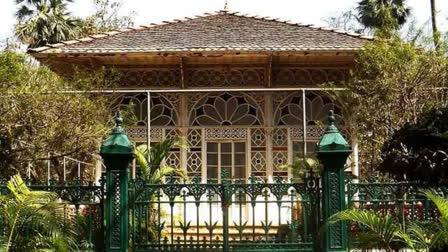Shantiniketan (West Bengal): After an effort of nearly 13 years, Visva Bharati University, established by Nobel laureate Rabindranath Tagore, is set to become a UNESCO World Heritage site, according to Union Tourism Minister G Kishan Reddy. The announcement of the "World Heritage" status is expected to take place at a ceremony in Saudi Arabia in September 2023. Visva Bharati will be the first living university in the world to receive this prestigious recognition.
In a tweet G Kishan Reddy wrote “Great news for India. Shantiniketan, West Bengal (where Gurudev Rabindranath Tagore established his first school) has been recommended for inclusion in the World Heritage List by ICOMOS, the advisory body of the UNESCO World Heritage Centre,”.
The decision was made following a visit by a seven-member UNESCO delegation to the university in October 2021. The delegation, comprising members of the International Council on Monuments and Sites and the International Union for Conservation of Nature, visited traditional places within the university's campus, such as Santiniketan Griha, Upasana Griha, Ghanta Tala, Kala Bhavan, Sangeet Bhavan, Rabindra Bhavan, Taldhvaj, Chatimatala, and Gauraprangan.
“The evaluation process for the World Heritage status is done by two advisory bodies, which provide evaluations of the cultural and natural sites nominated. The Indian Archaeological Department had already verbally informed the Visva Bharati authorities about the decision”, acting Public Relations Officer Mahua Banerjee said.
The news of the university's World Heritage status has been welcomed by residents of Santiniketan, where the university is located. Kishore Bhattacharya, a Visva Bharati teacher, called it a matter of pride for the institution and thanked all parties involved.
This recognition follows a long and arduous process that began in 2010, when the Union culture ministry first appealed to UNESCO to grant World Heritage status to Santiniketan, in preparation for Tagore's 150th birth anniversary. However, the original application was pushed to the tentative list after a technical evaluation by the International Council on Monuments and Sites found that development pressure on the campus had tampered with its heritage value.
The Archaeological Survey of India (ASI), in collaboration with Visva Bharati University, prepared a fresh dossier and submitted it to UNESCO. An ASI team, led by its director general Vidya Vidyanathan, camped at the university in January to prepare the report and answer the questions raised during the previous evaluation. External heritage conservation experts were also brought in to assist with the process.
The renovation of various traditional buildings and sculptures scattered throughout the university's campus is already underway, with the central government providing approximately Rs 3 crore for the purpose. A total of 24 buildings and architectural renovations have the potential to be collectively listed as World Heritage and are undergoing renovation. Visva Bharati authorities have also formed their own committee for this purpose.
The recognition of Visva Bharati as a World Heritage site will be a significant milestone for the university, which was established in 1921 by Tagore as a unique experiment in education that combined Indian and Western traditions. The university is renowned for its emphasis on the arts, literature, and culture, and has produced many notable alumni, including Nobel laureate Amartya Sen and former Prime Minister Indira Gandhi.
The UNESCO World Heritage status is expected to boost tourism in Santiniketan and provide a fillip to the economy of the region. The recognition is also likely to inspire other institutions to preserve their cultural heritage and promote tourism in their areas.
The recognition of Visva Bharati University as a UNESCO World Heritage site is a proud moment for India and a significant milestone for the university. The long and arduous process of securing the status is a testament to the dedication of the Indian Archaeological Department, Visva Bharati University, and the external heritage conservation experts who contributed to the dossier.
